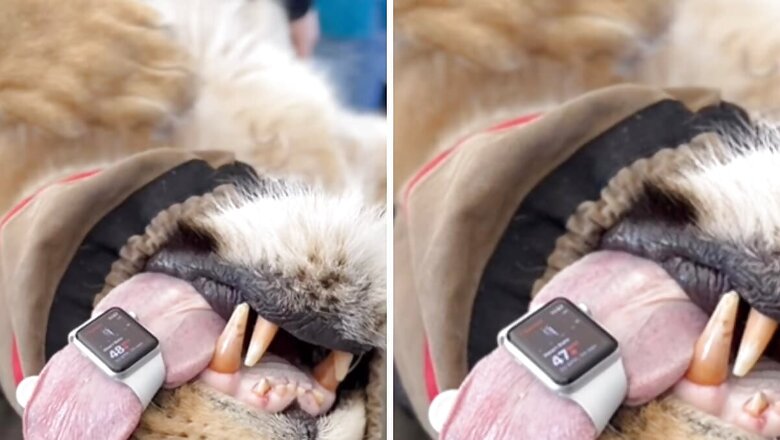
views
Apple Watch is famous for its advanced health monitoring capabilities, and now it is proving its worth beyond just human use. Recently, a groundbreaking application of this technology has emerged from the wild in Australia. Dr Chloe Buiting, a wildlife veterinarian, in an Instagram post, showed a unique use of the Apple Watch for monitoring the heart rate of lions.
In the viral video, a sedated lion is seen lying with an Apple Watch carefully placed on its tongue, demonstrating the watch’s ability to monitor the lion’s vital signs. The screen of the watch displays real-time health metrics.
“I don’t know what’s more impressive… the snore, or the discovery that the @apple Watch can measure a lion’s heart rate if you strap it to the tongue (even if it is one of the less conventional “off-label” uses for the device ). Either way, it’s a true ‘technology meets conservation’ story,” Dr Chloe wrote in the caption.
Dr Chloe explained how she and her colleagues, Dr Fabiola Quesada and Dr Brendan Tindall, discovered the trick of using the Apple Watch for wildlife health monitoring. In her post, she highlighted the challenges of monitoring anaesthesia in the field. She noted that many devices are designed for smaller animals, making it extra challenging to get accurate readings.
Calling the use of the Apple Watch for wildlife a “game-changer,” Dr Chole revealed that the watch works not only on lions but also on elephants when taped to their ears.
“So, when my colleague @fabiola_wildspirit and Dr Brendan Tindall found this trick recently, it was a game changer! It even works on elephants (when taped to their ears which is a sight in itself) and is the ultimate “work smarter, not harder” in my book. It was a pleasure to be in the field with Dr Fabiola this month – the first of many times I hope,” she wrote.
Dr Chole further expressed her admiration for the advancements in technology and its impact on conservation. She underscored several key innovations such as the unexpected use of the Apple Watch for monitoring wildlife, real-time GPS tracking collars for endangered species and “horn pods” for rhinoceros.
“It’s nothing short of incredible to see all the advances that have been made – all of which are just little reminders of the incredible potential technology holds, and all of the hope that remains for some of our most critically endangered animals,” she added.
Since being shared, the post quickly went viral and has amassed over 5.1 million views.
The Apple Watch measures heart rate using photoplethysmography, a technique that leverages the body’s natural properties of light absorption. It reflects green light on the skin and uses light-sensitive photodiodes to detect changes in light absorption of green light. By rapidly flashing the LEDs, the watch captures these changes and calculates the heart rate.




















Comments
0 comment